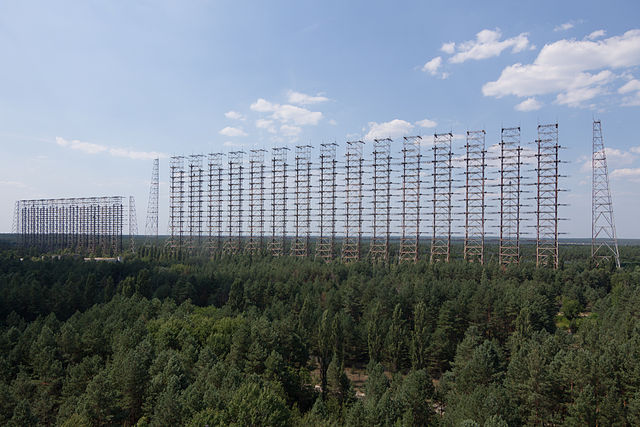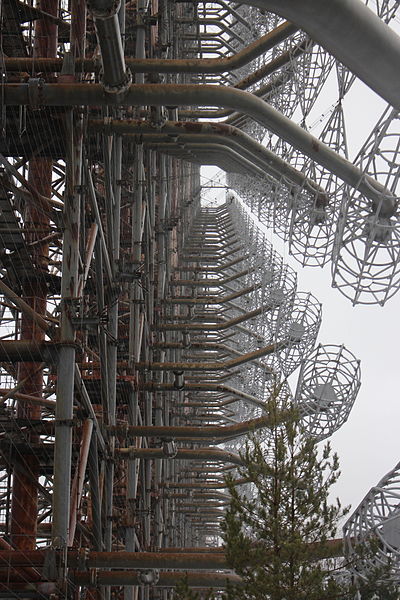Duga was an over-the-horizon radar (OTH) system used in the Soviet Union as part of its early-warning radar network for missile defense. It operated from July 1976 to December 1989. Two operational duga radars were deployed, with one near Chernobyl and Chernihiv in the Ukrainian SSR, and the other in eastern Siberia.
The array at Chernobyl, Ukraine, viewed from a distance in 2014
Duga-1 array within the Chernobyl Exclusion Zone. The array of pairs of cylindrical/conical cages on the right are the active elements, fed at the facing points with a form of ladder line suspended from stand-off platforms at top right. A backplane axial reflector of small wires is visible left of center, most clearly at the bottom of the image. The elements appear to be a modified type of cage or bi-conical dipole providing wide operating bandwidth.
Steel structure of Duga-1 from below
Panoramic view of the landscape surrounding Duga-1. The Chernobyl Nuclear Power Plant is visible in the far left, close to the horizon.
Over-the-horizon radar (OTH), sometimes called beyond the horizon radar (BTH), is a type of radar system with the ability to detect targets at very long ranges, typically hundreds to thousands of kilometres, beyond the radar horizon, which is the distance limit for ordinary radar. Several OTH radar systems were deployed starting in the 1950s and 1960s as part of early-warning radar systems, but airborne early warning systems have generally replaced these. OTH radars have recently been making a comeback, as the need for accurate long-range tracking has become less important since the ending of the Cold War, and less-expensive ground-based radars are once again being considered for roles such as maritime reconnaissance and drug enforcement.

How a skywave OTH radar works: A powerful shortwave signal from a large transmitting antenna (left) reaches a target beyond the horizon by refracting off the ionosphere, and the echo signal from the target (right) returns to the receiving antenna by the same route. In practice, the beams are much closer to the horizon than shown here.
Duga radar array, near Chernobyl
Coverage of the three U.S. Navy ROTHR stations in Texas, Virginia, and Puerto Rico
Transmitter array, Sector 6, Christmas Valley, Oregon







